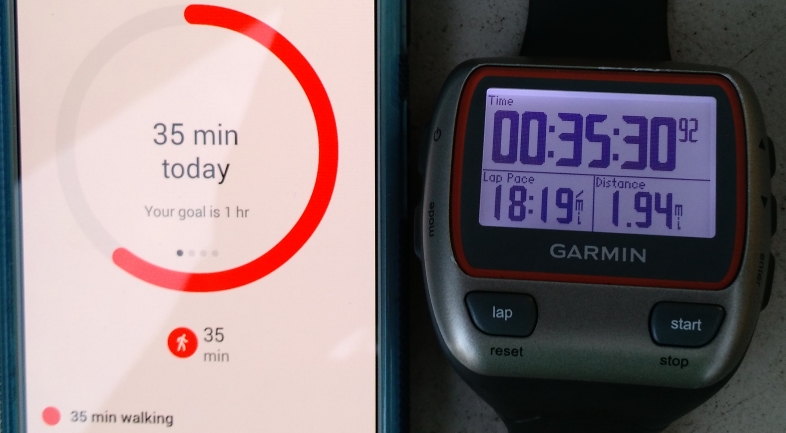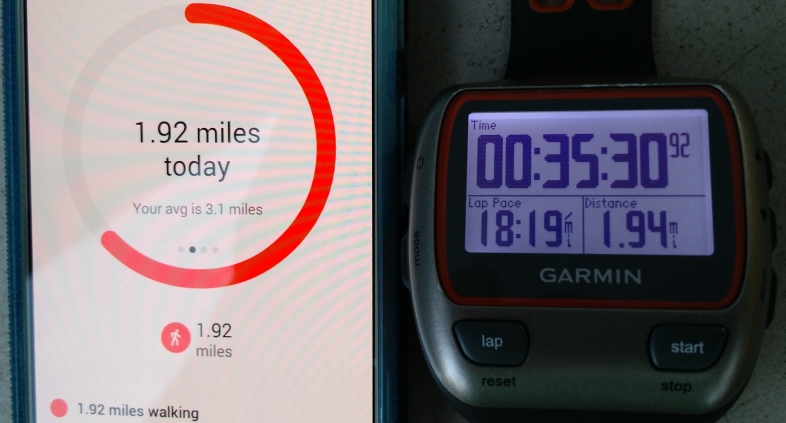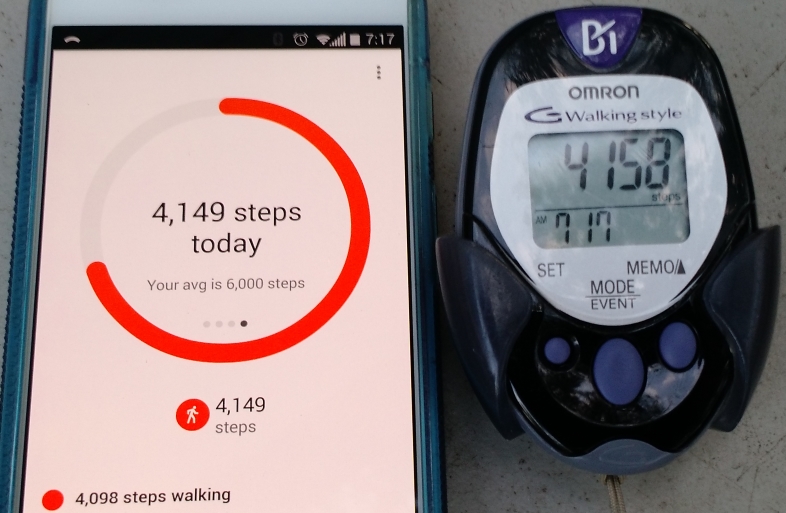Google Fit vs. Garmin Forerunner 310XT
“Google Fit vs. Garmin Forerunner 310XT” is this article’s title, but “Tracking vs. Training” could be just as appropriate.
My 310XT died last week.
The hinge-pin above the the display tore through the orange plastic about two months ago. So, I had been running with the Garmin held in one hand instead of strapped to my wrist. I could live with that. I even had a way to “palm” it with the lower strap tucked under the inside strap of my Knuckle Light.
But, I got a “LOW BATTERY” alert that hid the display as I was about to start a 13-miler at 5 AM last Saturday. My later attempt at home to charge the Garmin was a dud. It was/is dead. I know that the charger works; my wife also has a 310XT. But, the charger could not cause mine to beep, to buzz, or to display “CHARGING” on its face.
Google Fit to the Rescue?
As I recommend in 123 Cellphone Tips for Runners and Walkers, I always train and race with my cellphone.
I have a cellphone running Android 4.4. I installed the Google Fit app two weeks ago.
So, Google Fit was active last Saturday during my 13-miler. And, I ran with a Gymboss interval timer and an Omron pedometer. Google Fit impressed me with how close it was to a training buddy’s GPS measurement of the 13-miler. And, Google Fit was pretty close to what my Omron pedometer said about the number of steps.
I wondered, “Could Google Fit replace a Garmin wrist-unit and a pedometer?”
The short answer is, “Yes for basic tracking, but No for training.”
Let me explain.
I walked with my wife this morning. She wore her 310XT. I had my Google Fit-equipped cellphone in my hydration belt. I also wore my Omron pedometer. Here are three post-walk comparisons.
Duration

Google Fit measured 35 minutes. Garmin measured 35:30. — Garmin is more accurate.
Distance

Google Fit measured 1.92 miles. Garmin measured 1.94 miles. — Distances are similar.
Step Count

Google Fit counted 4,149 steps. Pedometer counted 4,158 steps. — Step counts are similar.
Tracking vs. Training
This all looks pretty good, right?
Here’s the problem.
- Yes, you can use Google Fit to track walking duration, distance, and steps. Not shown above, you also can use it to track running duration, distance, and steps. But, I’m unsure how it distinguishes between walking and running.
- Yes, you can replace a pedometer with Google Fit. But, just as you must wear your pedometer everywhere, you must carry your cellphone with you everywhere. I prefer the former to the latter.
So,
- Google Fit is fine for tracking your running and walking.
But,
- No, Google Fit cannot replace a GPS wrist unit for training.
I like to refer to a GPS wrist-unit as a “speedometer” for the body. I said as much in Run:Walk Pace Tables in Minutes/Mile and its Minutes/Kilometer companion.
- Google Fit cannot provide this.
GPS wrist units such as the 310XT have lap functionality.
- Google Fit cannot provide this.
Training requires immediate feedback.
- What’s my instantaneous pace?
- What was my pace in the previous lap?
- What’s my pace in the current lap?
Unless you pair a smartphone app with a smart watch, it’s good for tracking but not for training.
In contrast, a GPS wrist-unit such as the 310XT is great for training as well as for tracking. You can use its display for instant, waterproof feedback, and you can synchronize it with a website.
What Say You?
Do you agree? Do you disagree?
The hinge tear is a non-starter for getting another 310XT. What GPS watch would you recommend instead?
Please leave a comment below. I look forward to hearing from you!